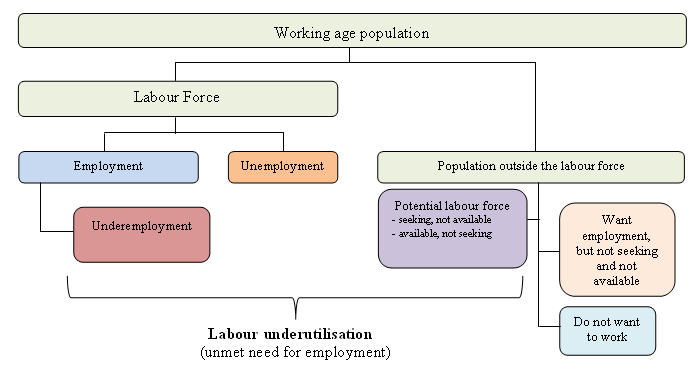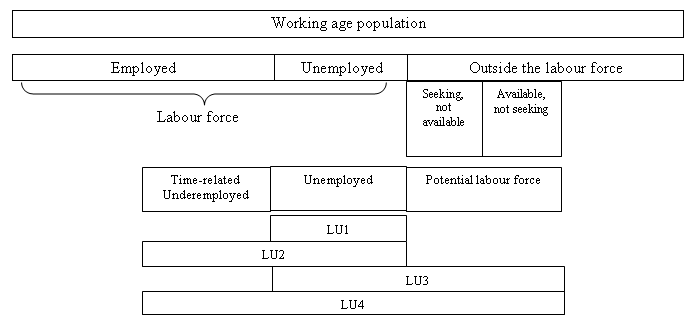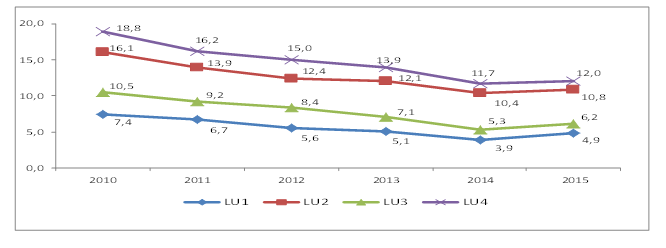Labour underutilisation in the Republic of Moldova
The National Bureau of Statistics (NBS) presents the indicators on labour underutilisation, which were calculated according their definitions, provided by the new Resolution concerning statistics of work, employment and labour underutilisation1, adopted at the 19th International Conference of Labour Statisticians (19th ICLS, International Labour Office (ILO), Geneva, 2013).
Following the above-mentioned Resolution, the new concept of labour underutilisation includes the well-known indicators of time-related underemployment and unemployment. NBS produces these indicators with quarterly/annual frequency based on the statistical survey in households – Labour Force Survey (LFS). In the same time, the labour underutilisation includes a new concept/indicator – potential labour force, which covers a part of population outside the labour force, but keeping the relation with the labour market(definitions are presented in the Annexes, part II).

The new standard defines four main indicators that characterize labour underutilisation (see Annexes, part II for more information on calculation formula):
LU1: Unemployment rate
LU2: Combined rate of time-related underemployment and unemployment
LU3: Combined rate of unemployment and potential labour force
LU4: Composite measure of labour underutilisation

All those four indicators of labour underutilisation can be estimated based on the LFS data. Their evolution during the last six years is presented as follows:
Figure 1. Rates of labour underutilisation indicators, 2010-2015, %

The analysis of indicators by sex reveals that labour underutilisation affects more men than women: the values recorded for all those four indicators among men are 1.5-1.7 times higher than for women.
When analysing the indicators by areas of residence, it results that the unemployment rate (LU1) and the combined rate of unemployment and potential labour force (LU3) are 1.6-1.8 times higher in urban areas as compared to the rural ones. By the other hand, the combined rate of time-related underemployment and unemployment (LU2) and the composite measure of labour underutilisation (LU4) record higher values in the rural areas as compared to the urban ones. However, in the case of the last ones, the differences recorded for rural and urban areas are rather moderate (Figure 2).
Figure 2. Rates of labour underutilisation indicators, by sex and areas, 2015, %

The distribution of indicators by statistical regions reveals the fact that the phenomenon of labour underutilisation has a higher impact on Chisinau municipality (in particular, LU1 and LU3) and the Centre region (in particular LU2 and LU4), followed by the North region. The lowest (relatively) values of indicators are recorded in the South region.
Figure 3. Rates of labour underutilisation indicators, by statistical zones, 2015, %

The indicators on labour underutilisation will be presented on the NBS official website: old.statistica.md
Note:
1 Resolution I. Resolution concerning statistics of work, employment and labour underutilization: http://www.ilo.org/global/statistics-and-databases/meetings-and-events/international-conference-of-labour-statisticians/19/WCMS_230304/lang--en/index.htm
Annexes:
Contact person:
Vătcărău Elena, Head of division Labour Market Statistics
Tel.: 0 22 40 30 99 / 0 22 24 16 52
